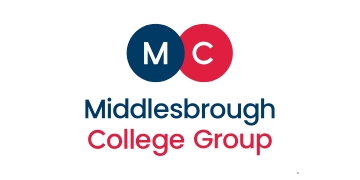The government has been urged to not “forget” FE when making higher education spending decisions after researchers found more colleges are in deficit, have larger deficits and are less able to meet debt obligations than universities.
Analysis was published by the Education Policy Institute today as Labour’s first budget draws near.
The think tank pointed out that rising inflation, frozen tuition fees and falls in international students have put universities in a “financial precipice”, highlighting forecasts from the Office for Students that 40 per cent of higher education institutions are expected to run at a loss in 2023/24.
Concern over university finances has led to rumours that Labour could increase tuition fees as it considers the HE funding model in the long term.
This follows a push by university representatives to be allowed to increase undergraduate tuition fees by inflation and receive extra funding for up-front teaching costs of priority subjects.
EPI said FE has been “largely ignored” in this debate despite Labour’s manifesto promise of a “comprehensive strategy” that would “better integrate” further and higher education.
The think tank looked at the 2022/23 Education and Skills Funding Agency’s annual college accounts database and data from the Higher Education Statistics Agency (HESA) to assess the state of the two sectors’ finances over the last six years.
Here’s what researchers found.
Half of colleges are in a deficit
Since 2017/18, a steadily growing proportion of HE providers have been in an operating deficit, with this figure reaching a record high of 36 per cent in 2022/23.
At the same time however, a consistently greater proportion of colleges have been running deficits, hitting a high of 75 per cent in 2021/22 before falling to 49 per cent in 2022/23.
EPI said the fall in the proportion of colleges reporting deficits in the latest year of available data, 2022/23, is in “large part” a result of additional 16 to 18 spending included as a part of the 2021 spending review.
Researchers said the £615 million cash boost for the sector has “not been as impactful as expected” given the scale of inflation in the past year and without maintaining or increasing this level of funding in the 2024 spending review, this trend is “unlikely to continue”.
Proportion of providers in operating deficit, 2017/18 – 2022/23

Sources: HESA income and expenditure data, 2017/18 – 2022/23. ESFA financial management: college accounts, 2017/18 – 2022/23. Expenditure figures are adjusted to remove the impact of changes to pension costs.
College deficits are also larger than unis
EPI also found that since 2017/18, the mean income-weighted operating deficit as a percentage of total income has remained positive for HE providers, reflecting the first chart that indicated a consistent minority of providers in deficit.
In 2022/23, this figure fell to 3 per cent, its lowest since 2019/20, the year before providers began to see some cost savings as a result of shifts to online teaching and lowered use of campus facilities in the wake of the pandemic.
Colleges experienced the opposite throughout this period. Despite a brief sector surplus of 1 per cent in 2019/20, the sector deficit plunged in the following years, hitting -5 per cent in 2021/22.
The sector did however return to a surplus n 2022/23, boosted by the additional funding from the 2021 spending review, but remains below the higher education average.
Operating surplus/deficit as a percentage of total income (income weighted), 2017/18 – 2022/23

Sources: HESA income and expenditure data, 2017/18 – 2022/23. ESFA financial management: college accounts, 2017/18 – 2022/23. Expenditure figures are adjusted to remove the impact of changes to pension costs.
Colleges less likely to meet their debts
EPI explained that the ratio of a provider’s short-term assets (such as cash, inventory, and receivables) to its short-term liabilities (such as payroll, taxes, and money owed to suppliers) is known as the “current ratio”. This is an indicator of the provider’s liquidity, or its ability to pay short-term debts.
Researchers found the average current ratio for both sectors has increased steadily since 2017/18 and has always remained above the 1.2 threshold. This is a “positive indicator” for both, suggesting on average they are “increasingly able to meet their short-term obligations”.
In higher education, the average ratio is considerably higher at 2.9 in 2022/23, with 19 per cent of providers falling below the 1.2 threshold. In further education however, the average ratio sits at 1.8, while 25 per cent of providers have a current ratio below 1.2.
Mean current ratio, 2017/18 – 2022/23

Sources: HESA key financial indicators, 2017/18 – 2022/23. ESFA financial management: college accounts, 2017/18 – 2022/23.
Proportion of providers with current ratio below 1.2, 2017/18 – 2022/23

Sources: HESA key financial indicators, 2017/18 – 2022/23. ESFA financial management: college accounts, 2017/18 – 2022/23.
Place FE funding decisions alongside HE
EPI said these financial metrics show a “clear picture: when compared to their higher education counterparts, more further education providers are in deficit, their deficits are larger, and they are less able to meet those debt obligations”.
Given this, the Treasury “must place further education alongside higher education in terms of funding priorities in the upcoming budget”, the think tank said.
EPI added: “Ultimately, further education must be seen as part of a holistic system of post-18 education of the kind Labour pledged to develop in its 2024 manifesto. This can’t happen unless both sectors are financially sustainable.”
















Hover your mouse over the main image of the man holding an empty wallet and you’ll see a thought provoking description…
Thanks for flagging!